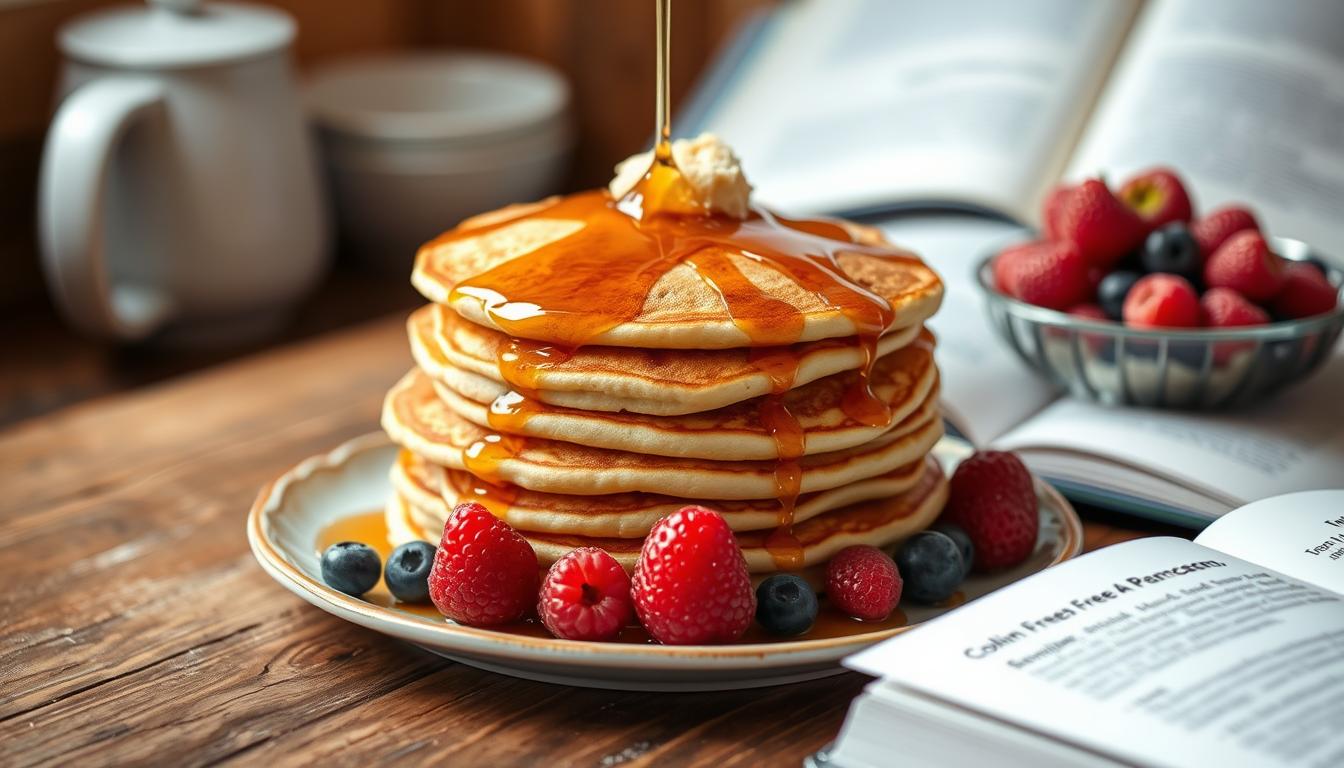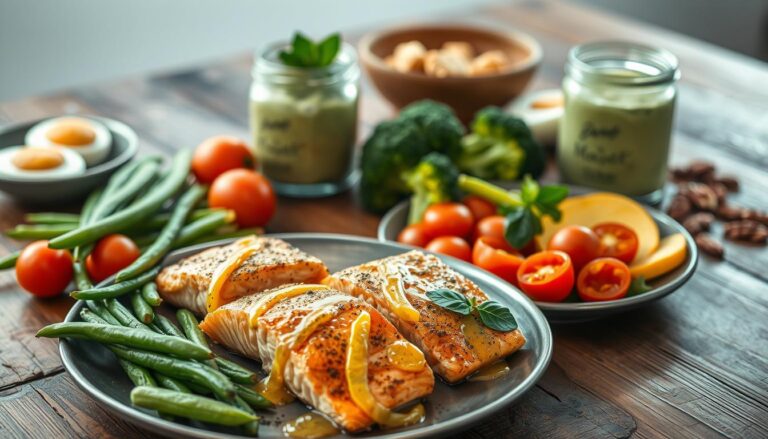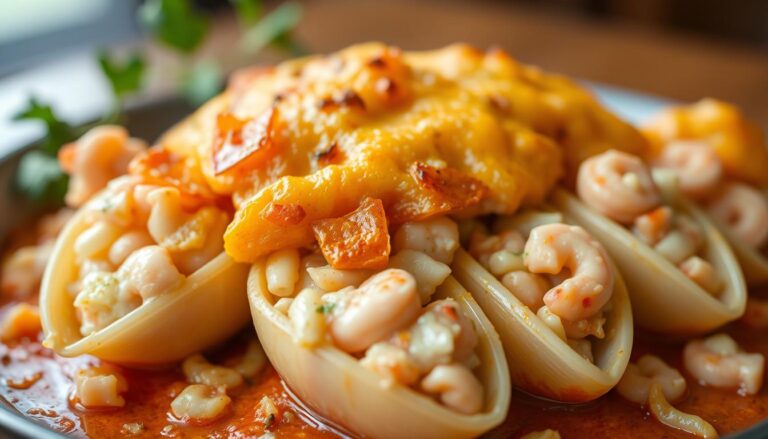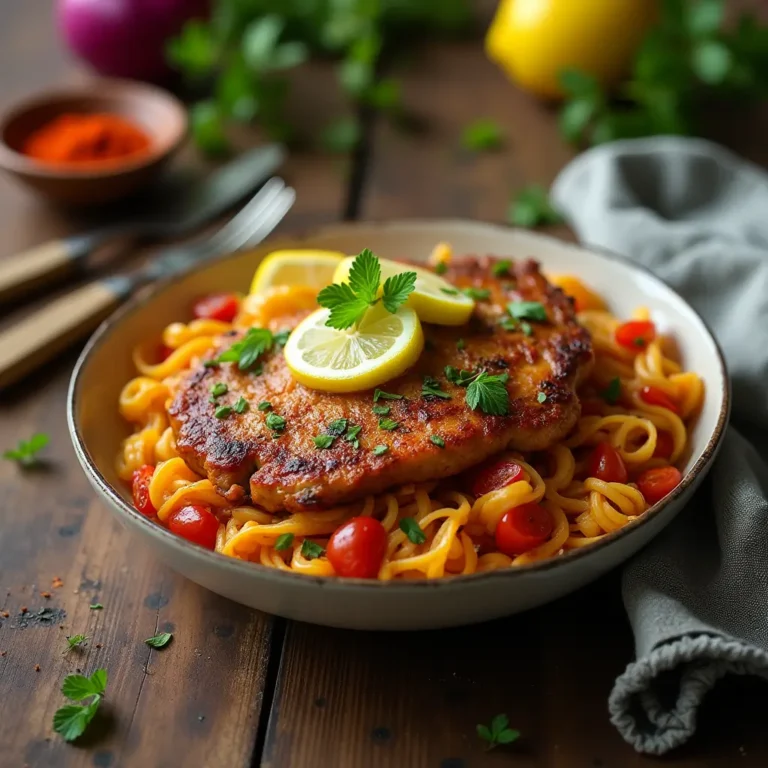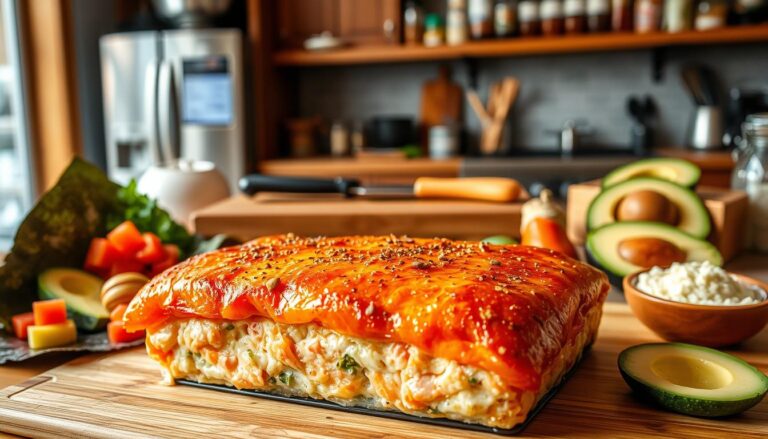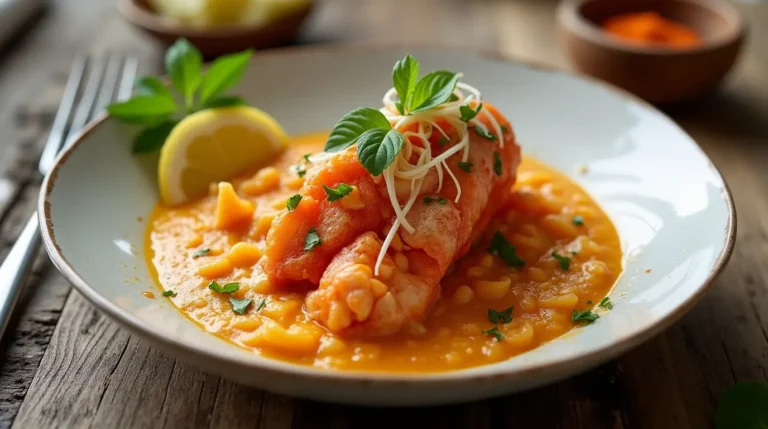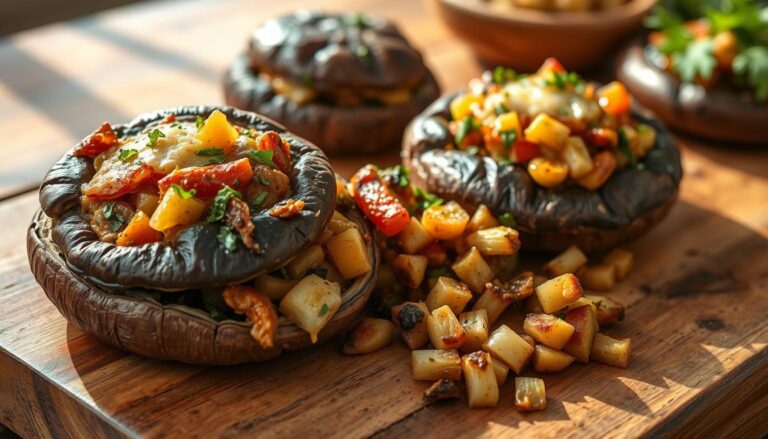Gluten-Free Pancake Recipe: A Delightful Breakfast Option
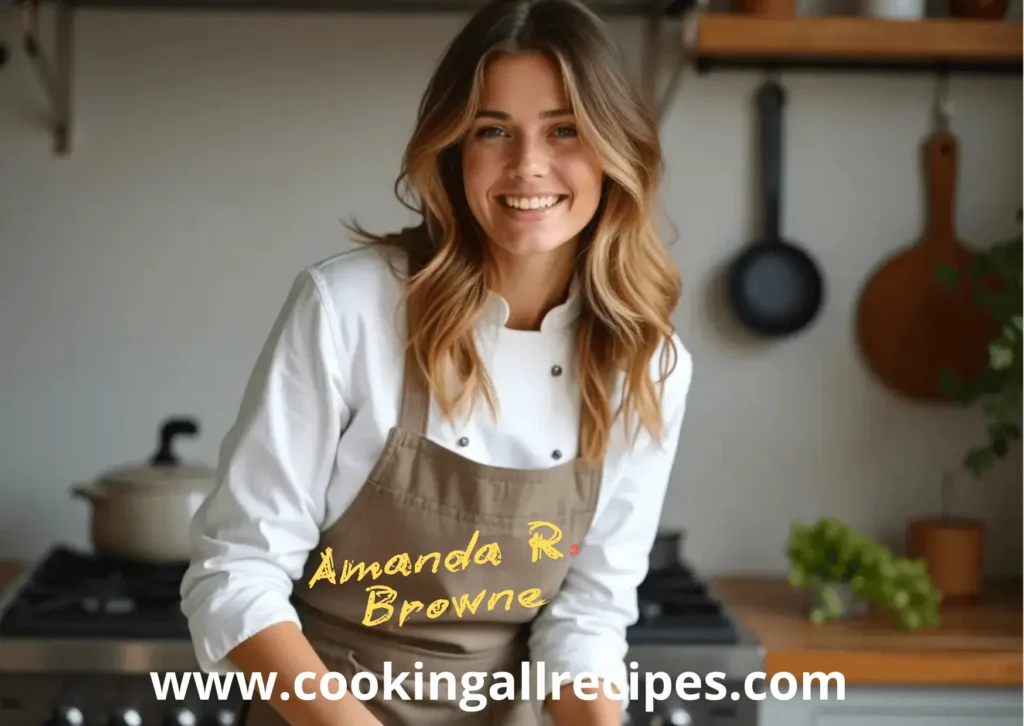
Imagine waking up to a stack of golden, fluffy, gluten-free pancakes. They melt in your mouth. For those with dietary restrictions, breakfast can be tough. Today, I’m excited to share a gluten-free pancake recipe that proves you don’t have to give up flavor or fun.
Your morning breakfast just got a delicious upgrade with these celiac-friendly pancakes. They’re made with care and can be ready in just 13 minutes. Each serving of 6 pancakes has about 150 calories.
Whether you’re managing celiac disease or gluten sensitivity or just want a healthier breakfast, this recipe is for you. Our method makes light, tender pancakes that are just as good as the traditional kind. The secret is in the right ingredients and a few key techniques.
Get ready to make your breakfast experience better with a recipe that’s both healthy and tasty. Your journey to perfect gluten-free pancakes starts right here!
Understanding Gluten-Free Pancakes
Exploring wheat-free baking opens up new culinary adventures for those with dietary needs. Gluten-free pancakes are a hit for breakfast, meeting various nutritional and health goals.
Unique Characteristics of Gluten-Free Pancakes
Gluten-free pancakes differ from traditional ones. They need special ingredients and preparation. The main differences are:
- Alternative flour blends that replace wheat-based flour
- Unique binding agents to maintain texture
- Specialized mixing techniques
Health Benefits and Dietary Considerations
Gluten-free pancakes are great for health reasons. They’re a must for those with celiac disease or gluten sensitivity.
Who Should Enjoy Gluten-Free Pancakes
These pancakes are perfect for many:
- Individuals with Celiac Disease
- People with gluten intolerance
- Those seeking to reduce wheat consumption
- Health-conscious eaters exploring alternative nutrition
Wheat-free baking lets everyone enjoy a tasty breakfast without sacrificing nutrition. With ingredients like chickpea flour and flaxseed, these pancakes are both healthy and tasty.
Essential Ingredients for Perfect Gluten-Free Pancakes
Making tasty gluten-free pancakes begins with the right ingredients. Your flour substitutes are key for the perfect texture and taste. A well-chosen flour blend is the base for great pancakes, offering both flavor and nutrition.
Here are the key ingredients you’ll need:
- Gluten-free flour blend
- Xanthan gum for binding
- Baking powder
- Eggs
- Milk (dairy or non-dairy)
- Oil or butter
When picking your flour substitutes, look for options that are nutritious. Buckwheat flour is a great choice, as it is full of fiber and minerals5. Chickpea flour adds protein and helps bind the ingredients together.
Pro tip for healthy cooking: Try adding chia seeds or flaxseed to improve moisture and texture. These can make your pancakes soft and fluffy.
The secret to perfect gluten-free pancakes lies in understanding how each ingredient contributes to the final result.
Your gluten-free flour blend should mix different starches and flours. A good mix includes:
- 140 grams superfine white rice flour
- 45 grams potato starch
- 25 grams tapioca starch/flour
The right mix of ingredients can make your gluten-free pancakes just as good as the traditional ones. With the right selection and preparation, you’ll make a breakfast that everyone will enjoy.
Choosing the Right Gluten-Free Flour Blend
Creating perfect allergy-conscious recipes means knowing about gluten-free flour blends. The right mix of grain-free alternatives is key for tasty and fluffy pancakes.
Popular Flour Options for Pancakes
There are many gluten-free flour blends to try. Over 20 types are available. The goal is to find a mix that gives your pancakes the perfect texture and taste.
- Rice flour (white and brown)
- Almond flour
- Coconut flour
- Tapioca starch
- Potato starch
Understanding Flour Ratios
Getting the right gluten-free flour blend is all about the ratio. Use 2 1/2 cups of gluten-free starch to 1 1/2 cups of gluten-free whole grain flour. But be careful with brown rice flour. Too much can make your baked goods gritty.
“The art of gluten-free baking is about finding the right balance in your flour blend.” – Gluten-Free Baking Expert
The Crucial Role of Xanthan Gum
Xanthan gum is essential in gluten-free baking. It helps the flour stick together like gluten does. Most professional blends have about 3% xanthan gum7. For homemade mixes, add 3 teaspoons of xanthan gum, guar gum, or psyllium husk powder.
When picking a flour blend for allergy-conscious recipes, remember that quality matters. Brands like gfJules Flour have won awards and are safe for those with common food allergies.
Kitchen Tools and Equipment Needed
To make delicious gluten-free pancakes, you need the right kitchen tools. The right equipment helps make tasty and safe pancakes for those with gluten sensitivities.
- Non-stick pan or griddle
- Mixing bowls with multiple sizes
- Digital kitchen scales
- Balloon whisk
- Measuring cups and spoons
- Slotted turner or spatula
Choose a high-quality non-stick pan for even heat and to prevent sticking. The Ninja Foodi Zerostick frying pan is great for cooking gluten-free. Cookware prices range from £54.99 to £110, based on brand and features.
Pro tip: Invest in separate utensils and surfaces to prevent cross-contamination for those with severe gluten sensitivities.
Look for a kitchen set with many tools. The Joseph Joseph Nest 9 Plus nesting bowl set is versatile and has a large mixing bowl capacity of 4.5 litres.
| Appliance | Purpose | Recommended Product |
|---|---|---|
| Indoor Grill | Perfect for making pancakes and grilling | Ninja Foodi 6-in-1 Indoor Grill |
| Hand Mixer | Mixing gluten-free pancake batter | KitchenAid Hand Mixer |
| Multi-Cooker | Cooking, steaming, and air frying | Instant Pot Duo Crisp + Air Fryer |
| Electric Griddle | Ideal for fluffy gluten-free pancakes | Cuisinart Griddle & Grill |
| Smart Oven | Baking, toasting, and air frying | Breville Smart Oven Air Fryer |
| Blender | Blending pancake batter smoothly | NutriBullet Blender |
| Mini Waffle Maker | Making small pancakes or waffles | Dash Mini Waffle Maker |
| Belgian Waffle Maker | Versatile for pancakes and waffles | Hamilton Beach Belgian Waffle Maker |
Choosing the right kitchen tools will help you make great gluten-free pancakes. It’s all part of your specialty diet’s cooking journey.
Step-by-Step Mixing Instructions
Making the perfect gluten-free pancake starts with the right mix. If you have gluten intolerance, getting it right is key to a tasty breakfast.
Proper Mixing Techniques
First, get all your ingredients ready and use two bowls. Mix your dry ingredients together first. This ensures the gluten-free flour and leavening agents are evenly spread. When mixing gluten-free batter, be gentle to avoid tough pancakes.
- Sift dry ingredients together
- Whisk the wet ingredients in a separate bowl
- Create a small well in the center of dry ingredients
- Gradually fold wet ingredients into dry mixture
Batter Consistency Tips
Getting the batter just right is important for gluten-free pancakes. It should be smooth but not too thick. You want it to fall off your whisk. Use ¼ cup of batter per pancake for even results.
Resting Time Importance
Let your batter rest for 5-15 minutes before cooking. This step lets the gluten-free flour soak up liquid fully. It also improves the pancake’s texture. You can chill the batter in the fridge for up to 24 hours if you need to.
“The secret to great gluten-free pancakes is patience and proper technique.” – Gluten-Free Cooking Expert
Remember, the more you practice, the better you’ll get at making gluten-free pancakes. Each try will help you improve your skills.
Mastering the Cooking Temperature
Getting the perfect gluten-free pancake requires careful attention to cooking temperature. Healthy cooking starts with knowing how heat affects your pancake’s texture and taste. The best temperature for cooking gluten-free pancakes is between 375-400°F. This helps make a golden-brown outside and a soft inside.
Your cooking surface is key for perfect pancakes. An electric griddle or non-stick skillet is best for keeping heat even. Use a medium-low to medium heat setting to avoid burning and ensure even cooking.
- Preheat your cooking surface for 2-3 minutes
- Test the temperature with a small drop of water
- Look for bubbles forming on the pancake’s surface
- Adjust heat as needed during cooking
Pro tip: Cooking gluten-free pancakes needs patience. They are delicate and need gentle heat and careful watching to get that perfect golden-brown color.
“The right temperature transforms simple ingredients into a delightful breakfast experience.”
Remember, each pancake takes 4-6 minutes to cook fully. Look for signs like edges drying and bubbles forming across the surface. Your healthy cooking journey is all about precision and practice!
Flipping Techniques for Perfect Results
Mastering wheat-free baking is all about flipping pancakes, right? Knowing when to turn them over is crucial for tasty gluten-free pancakes.
Timing is Everything
When making wheat-free pancakes, look for signs they’re ready. Bubbles will start to form on the surface after about 90 seconds. These bubbles tell you it’s time to flip.
- Bubbles should form and start to pop on the surface
- The edges of the pancake will look slightly dry
- The top surface begins to look set
Perfecting Your Flip
Here are some tips for flipping success in wheat-free baking:
- Use a wide spatula for smooth flipping
- Flip gently to maintain pancake integrity
- Cook for 2-3 minutes per side.
Pro tip: Your first pancake is always a test run to gauge griddle temperature. Don’t worry if it’s not perfect at first!
Practice makes perfect in wheat-free baking pancake flipping!
Creative Topping Ideas and Combinations
Make your celiac-friendly breakfast exciting with fun pancake toppings. Turn your gluten-free meal into a tasty adventure.
Think about mixing different flavors for your perfect pancake. A great topping mix should have creamy, sticky, crunchy, and fruity elements.
Protein-Packed Topping Combinations
- Full-fat Greek yogurt with fresh raspberries
- Sliced oranges and almond butter
- Chopped banana with honey-roasted nuts
Crunchy Topping Options
| Crunchy Topping | Type |
|---|---|
| Homemade Granola | Nuts and Oats |
| Crushed Oreos | Cookie Crumble |
| Frosted Flakes | Cereal Crunch |
For a savory twist, try creamy egg yolks, bacon bits, cheese, and green onions.
Sweet Syrup Selections
- Real maple syrup
- Cinnamon syrup
- Blueberry syrup15
Your gluten-free pancakes need amazing toppings. Try different mixes to find your favorite breakfast.
Storage and Reheating Methods
Keeping your gluten-free pancakes fresh is key. You need to know how to store and reheat them correctly. This way, you can enjoy them all week while sticking to your dietary needs.
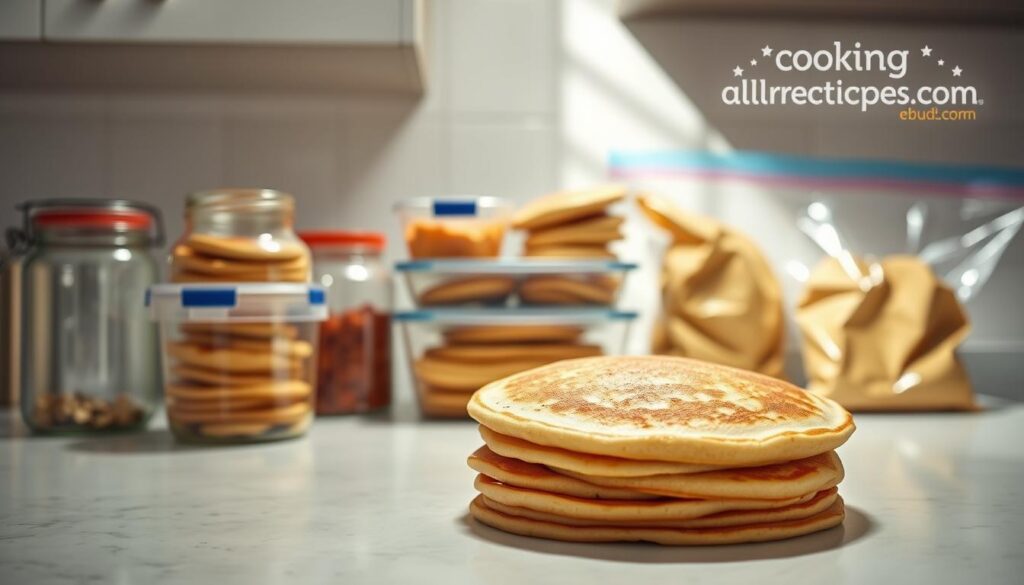
Refrigeration Guidelines
Gluten-free pancakes can stay fresh in the fridge for up to 3 days. Here’s how to keep them fresh:
- Let the pancakes cool down completely
- Use wax paper between layers
- Put them in an airtight container
Freezing Techniques
Freezing is great for long-term storage. Here’s how to freeze your pancakes:
- Put the pancakes in a single layer on a baking sheet
- Freeze until they’re firm
- Move them to a freezer-safe bag or container
- Keep them for up to 6 months
Reheating Methods
Here are ways to make your pancakes taste like new:
- Toaster: 90 seconds to 2 minutes
- Oven: 4-10 minutes, depending on whether they’re frozen or not
- Microwave: About 1 minute for 5 pancakes
- Skillet: 1-2 minutes, flip every 10 seconds
- Air Fryer: 2 minutes per side at 350°F
Tip: Eat reheated pancakes within 5 minutes for the best taste.
Troubleshooting Common Issues
Making the perfect gluten-free pancake can be tough, but don’t lose hope! Many people face issues when making allergy-conscious recipes. Knowing how to fix common problems is key.
Gluten-free pancake batter needs careful attention to get the right feel. Some bakers find their pancakes too dense or crumbly, ruining breakfast. But there are ways to make your gluten-free pancakes better:
- Moisture Balance: Gluten-free flours soak up more liquid, so tweak your recipe
- Let the batter rest for 10-15 minutes before cooking
- Try xanthan gum or other binding agents
- Mix well to make the batter stick together
Here’s a quick guide for common gluten-free pancake problems:
| Problem | Potential Solution |
|---|---|
| Dense Texture | Add extra liquid, and use a lighter flour blend |
| Falling Apart | Increase binding agents, let batter rest longer |
| Dry Pancakes | Reduce cooking time, check flour moisture ratio |
Creating the perfect gluten-free pancake takes time and effort. Over 2 million home bakers have learned that patience and trying new things are essential. Every batch gets you closer to the perfect breakfast!
Nutritional Benefits and Dietary Considerations
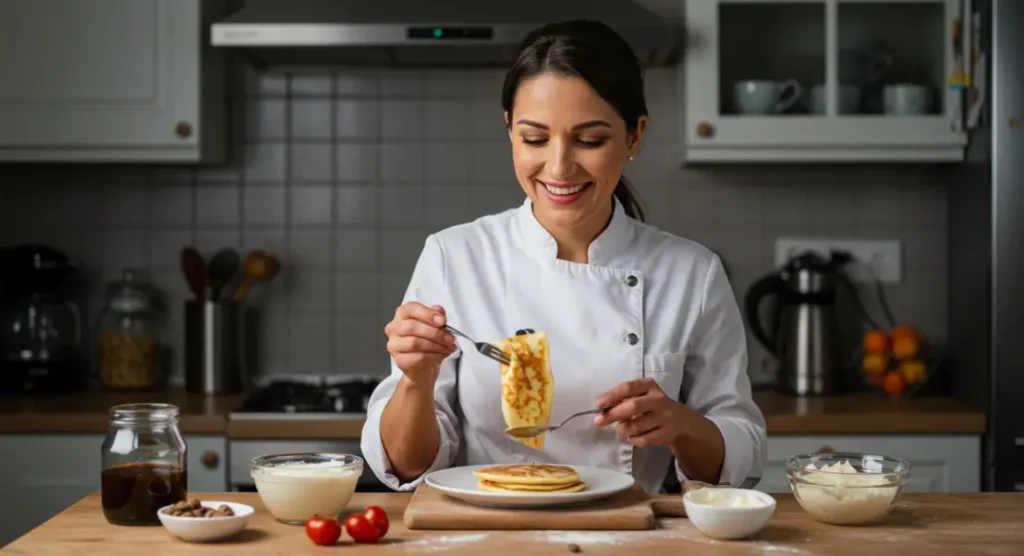
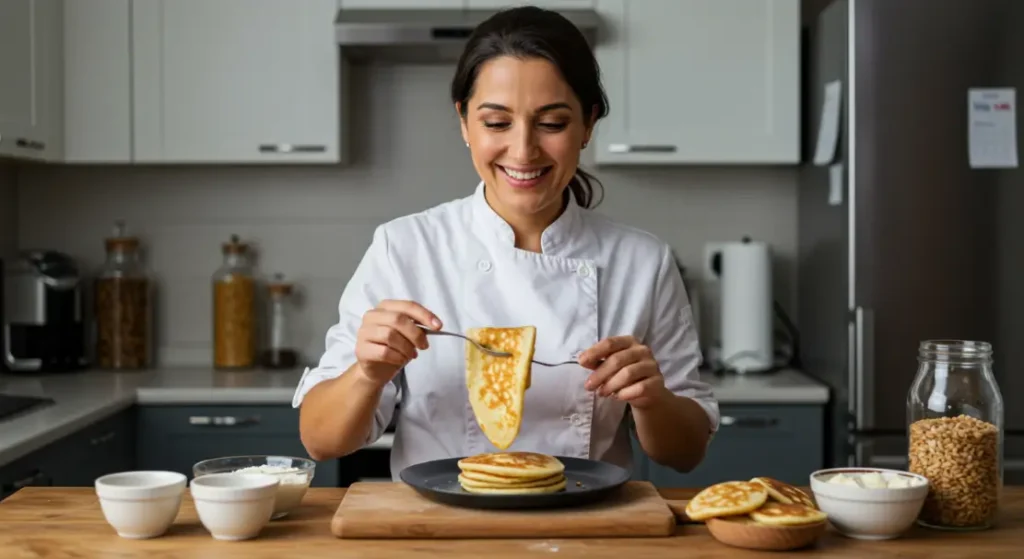
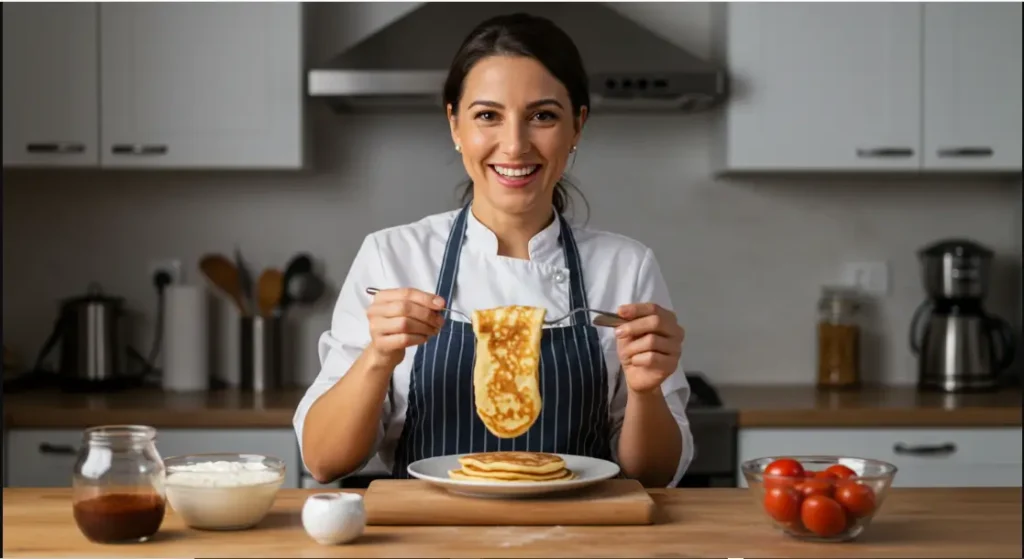
Gluten-free pancakes are more than just a tasty breakfast for those on special diets. They can be a nutritional powerhouse with the right ingredients.
Knowing what’s in your gluten-free pancakes helps you make better choices. Different flours offer different nutrients:
- Buckwheat flour is full of minerals like iron, manganese, copper, and zinc
- Almond flour adds healthy fats and extra protein
- Seven-grain blends add more nutrients
Caloric and Protein Insights
Gluten-free pancake mix usually has 130-220 calories. The protein varies, with some mixes having up to 15 grams per serving23. Look for mixes with at least 5 grams of protein to meet your needs.
Fiber and Nutritional Considerations
Fiber is key for good digestion. Most good pancake mixes have 3-5 grams of fiber per serving23. Eating enough fiber can help lower blood pressure and improve how your body handles insulin.
Pro tip: Pick pancake mixes that are non-GMO and don’t have refined sugars for a healthier breakfast.
When picking gluten-free pancake mixes, think about your diet and health goals.
Variations and Flavor Adaptations
Try new ways to make your gluten-free pancakes special. Use grain-free alternatives and different flours to make them tasty and healthy.
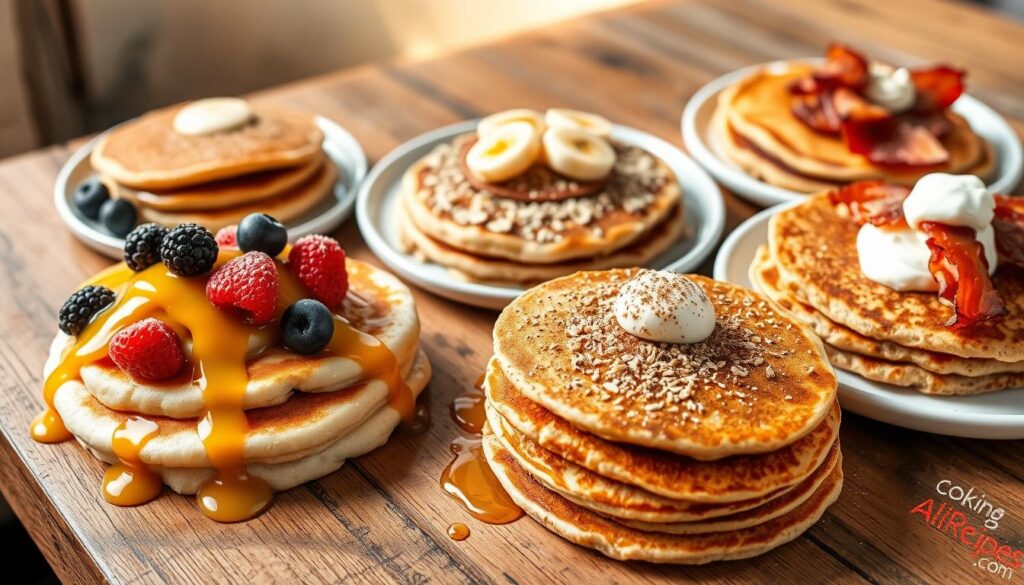
- Fruit Fusion: Add fresh berries, diced apples, or mashed bananas to the batter
- Nutty Delights: Sprinkle chopped almonds, walnuts, or pecans for crunch
- Spice Infusion: Try cinnamon, nutmeg, or cardamom for unique flavors
Looking for new flours to try? Here are some options to change your pancake’s taste and texture:
| Flour Type | Characteristics | Best Used For |
|---|---|---|
| Coconut Flour | Soaks up a lot of moisture, high in protein | Dense, slightly sweet pancakes |
| Almond Flour | Low in carbs, nutty taste | Lighter, more delicate pancakes |
| Oat Flour | Smooth texture, mild flavor | Traditional-style pancakes |
Using new flours might mean adjusting the liquid in your recipe. Coconut flour, for example, needs a lot more liquid than wheat flour24. You might need more eggs and liquid to get the right pancake texture.
Pro tip: Start with small batches when experimenting with new flour substitutes to find your ideal recipe!
By trying different grain-free options and flavors, you can turn your gluten-free pancakes into a fun adventure.
Tips for Meal Prep and Making Ahead
Creating a celiac-friendly breakfast doesn’t have to be time-consuming. Meal-prepping gluten-free pancakes can save you precious morning minutes. It ensures you stick to your dietary restrictions. The key is smart preparation and proper storage.
Your pancake batter can be refrigerated for up to 2 days. This makes breakfast planning a breeze. When preparing for the week, consider these strategic meal prep techniques:
- Mix the batter in advance and store in an airtight container
- Cook pancakes in batches and freeze them for quick reheating
- Label containers to prevent cross-contamination
For freezing, lay cooked pancakes between parchment paper sheets. They’ll stay fresh for up to one month. When ready to eat, microwave for 20-30 seconds or reheat in a toaster oven.
“Preparation is the secret to stress-free, delicious gluten-free mornings!”
Pro tip for busy individuals: Double your recipe to create multiple servings. This approach ensures you’ll have a quick, nutritious breakfast ready with minimal morning effort.
Always use separate cooking utensils and surfaces. This keeps your cooking area safe and gluten-free. Your future self will thank you for this thoughtful meal prep strategy!
Conclusion
Starting your journey in wheat-free baking is easy. Gluten-free pancakes are a tasty choice for breakfast. They meet dietary needs and are delicious. Almond flour is a great base because it’s low in carbs and high in protein.
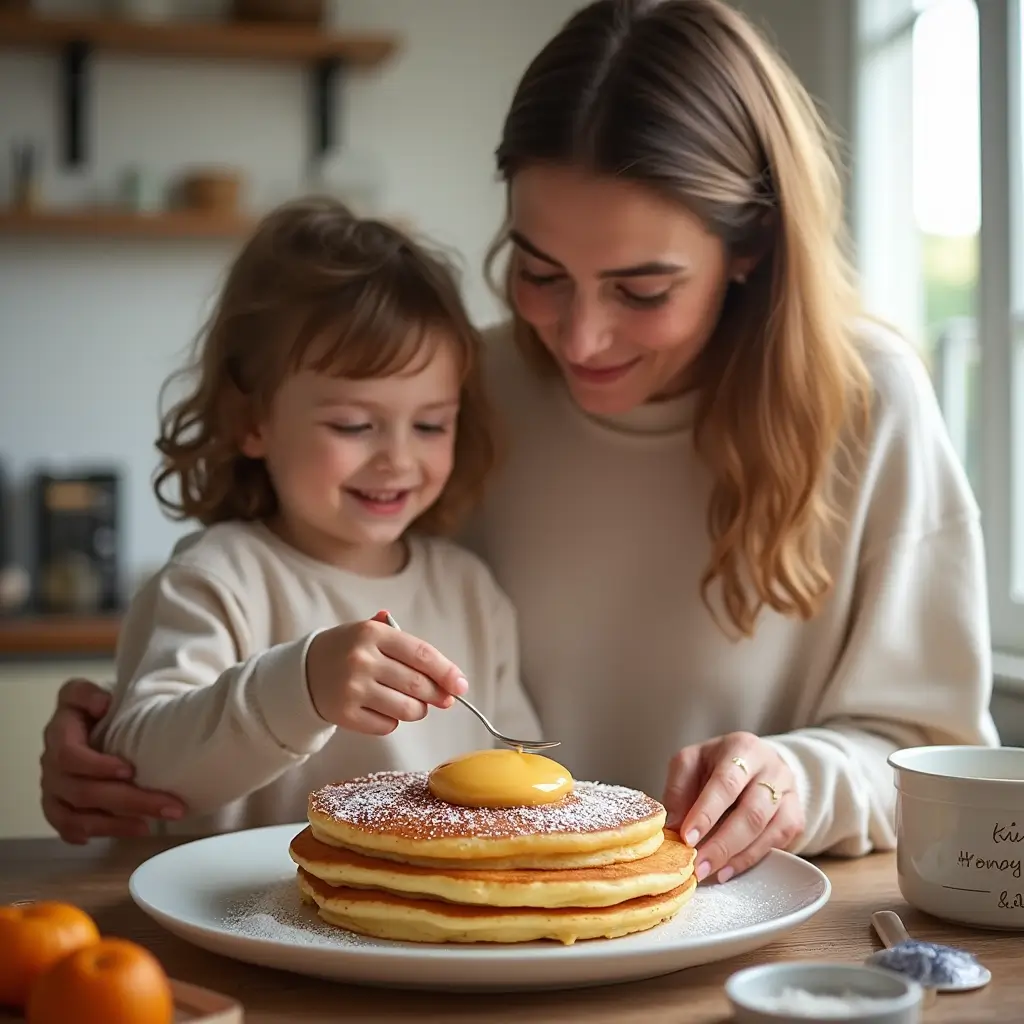

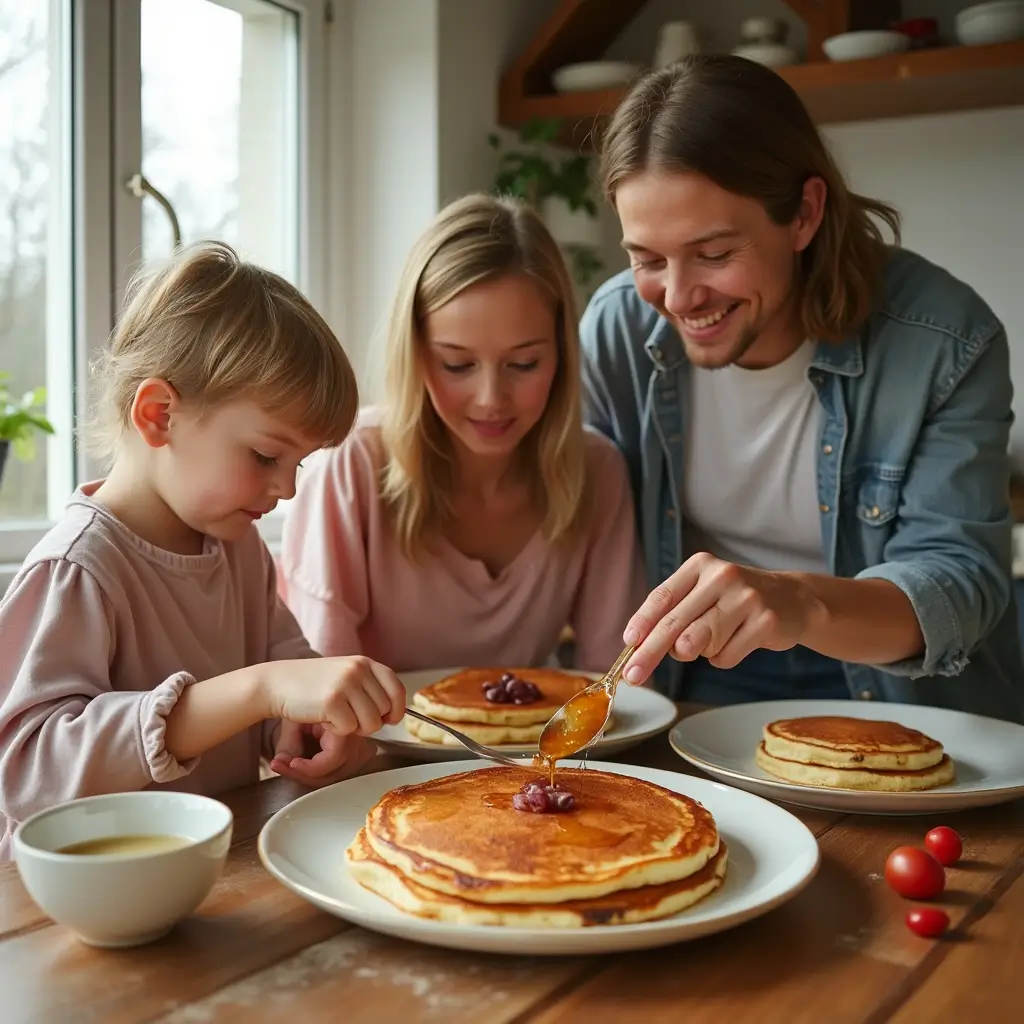
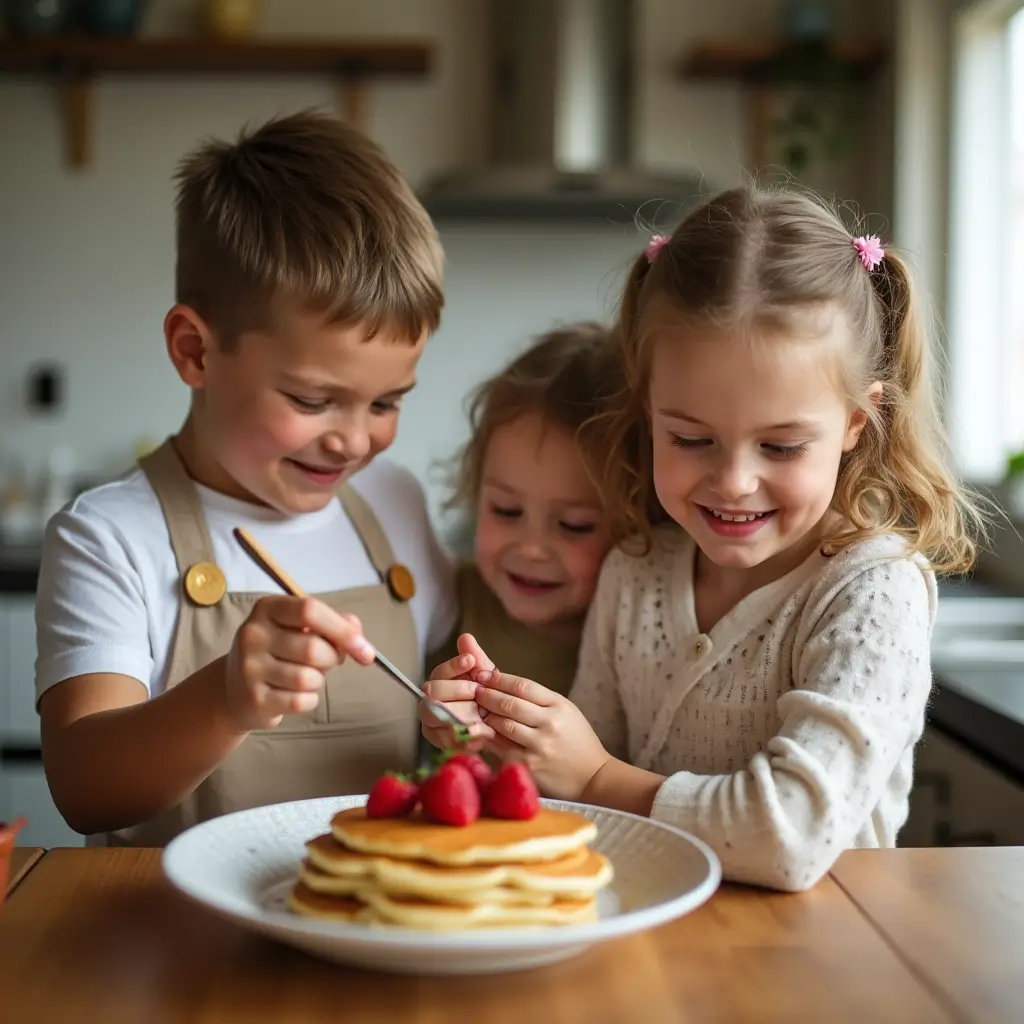
Getting your gluten-free pancakes just right is all about the right ingredients and techniques. Mixing gluten-free flour with a bit of xanthan gum makes them light and fluffy. This opens up a world of flavors and textures for you to try.
Don’t worry if it takes a few tries to get it right. Every batch you make will help you get better. These pancakes are perfect for those with celiac disease or gluten sensitivity or anyone looking for a healthier breakfast.
Take on the challenge of wheat-free baking with confidence. Your breakfast can now include tasty, healthy pancakes for everyone. Just remember to be patient, creative, and open to trying new things.
FAQ
Are gluten-free pancakes as tasty as traditional pancakes?
What are the best gluten-free flour alternatives for pancakes?
How can I prevent my gluten-free pancakes from becoming dense or gummy?
Can I freeze gluten-free pancakes?
Are gluten-free pancakes healthier than regular pancakes?
How do I avoid cross-contamination when making gluten-free pancakes?
Can I make gluten-free pancakes dairy-free as well?
What’s the best way to add flavor to gluten-free pancakes?
How did you find this recipe?
There are no reviews yet. Be the first one to write one.

